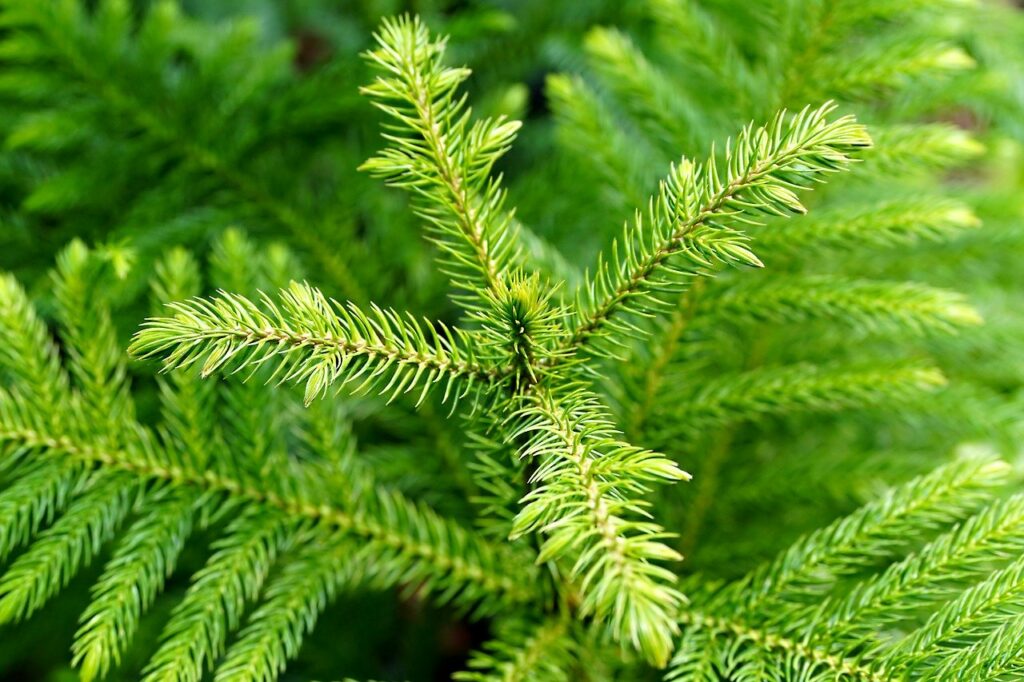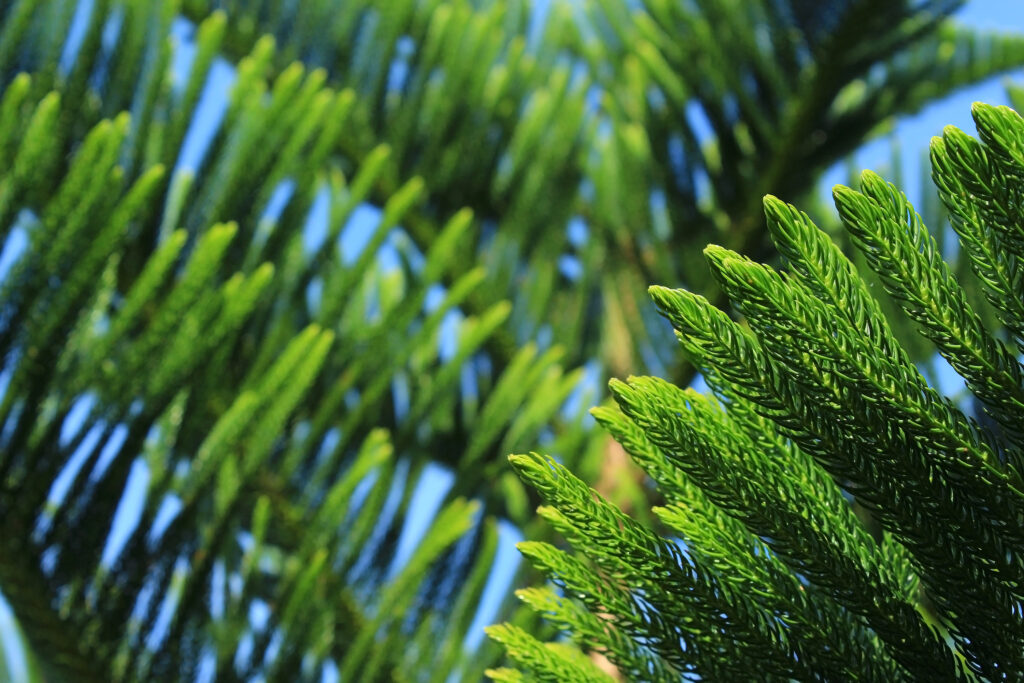Norfolk Pine is a popular houseplant that is known for its beautiful and lush foliage. However, if you notice your Norfolk Pine turning yellow, it can be a cause for concern. Yellowing leaves can be a sign of a problem, and it’s important to identify the cause and take appropriate action to save the plant.
Understanding Norfolk Pine is important to identify the causes of yellowing. Norfolk Pine is a tropical tree that can grow up to 200 feet tall in its natural habitat. However, when grown indoors as a houseplant, it typically reaches a height of 6 to 8 feet.
Norfolk Pine is a slow-growing plant that requires proper care to thrive. Signs of yellowing in Norfolk Pine can be an indication of a problem that needs to be addressed.
Common causes for yellowing in Norfolk Pine include overwatering, underwatering, lack of nutrients, and exposure to extreme temperature changes. Pests and diseases can also affect Norfolk Pine and cause yellowing.
It’s important to take preventive measures and treatment to address these issues and keep the plant healthy. Repotting and care for Norfolk Pine are also important aspects to consider to ensure the plant’s proper growth and development.
Key Takeaways on Norfolk Pine Turning Yellow
- Yellowing in Norfolk Pine can be a sign of a problem that needs to be addressed.
- Common causes for yellowing include overwatering, underwatering, lack of nutrients, and exposure to extreme temperature changes.
- Preventive measures, treatment, and proper care are important to keep the plant healthy.
Also don’t miss:
Understanding Norfolk Pine

Norfolk Pine, also known as Araucaria heterophylla, is a popular plant that is often used as a houseplant or landscape tree. It is native to Norfolk Island, located in the South Pacific Ocean.
Norfolk Pine is an evergreen tree that can grow up to 200 feet tall in its natural habitat. However, when grown as a houseplant, it usually grows up to 6 feet tall.
Norfolk Pine has needle-like leaves that are about 1 inch long. The leaves are green and glossy, and they grow in a spiral pattern around the branches. The branches of Norfolk Pine are strong and can support ornaments, making it a popular choice for a Christmas tree.
Norfolk Pine is a hardy plant that can tolerate a wide range of temperatures. It grows best in hardiness zones 9-11, which have mild winters and warm summers. However, it can also grow in cooler climates if it is protected from frost.
Despite its hardiness, Norfolk Pine can still develop problems. One common problem is yellowing or browning of the needles. This can be caused by a variety of factors, including:
- Exposure to extreme temperatures
- Overwatering or underwatering
- Lack of nutrients
- Pests or diseases
To keep Norfolk Pine healthy, it is important to provide it with the right growing conditions. This includes:
- Well-draining soil
- Regular watering
- Fertilization
- Proper lighting
By understanding the needs of Norfolk Pine and providing it with the right care, it can thrive as a houseplant or landscape tree.
Signs of Yellowing in Norfolk Pine

Norfolk Pine is a popular indoor plant that requires proper care and attention to thrive. One common issue that many people face with their Norfolk Pine is yellowing of the foliage. If you notice your Norfolk Pine turning yellow, it’s important to take action promptly to prevent further damage.
Here are some signs to look out for:
1. Yellow or Brown Needles
Yellow or brown needles are one of the first signs of trouble in a Norfolk Pine. If you notice the needles turning yellow or brown, it could be due to a lack of water, too much direct sunlight, or a nutrient deficiency. To determine the cause, check the soil moisture level, adjust the lighting conditions, and consider fertilizing the plant.
2. Needle Loss
Another sign of trouble in a Norfolk Pine is needle loss. If you notice the needles falling off the plant, it could be due to overwatering, underwatering, or a pest infestation. Check the soil moisture level, adjust the watering schedule, and inspect the plant for signs of pests such as spider mites or mealybugs.
3. Brown Branch Tips
Brown branch tips are a common sign of stress in a Norfolk Pine. If you notice the tips of the branches turning brown, it could be due to a lack of humidity, overfertilization, or too much direct sunlight.
To remedy the issue, increase the humidity around the plant, reduce the amount of fertilizer, and adjust the lighting conditions.
4. Foliage Damage
Foliage damage is another sign of trouble in a Norfolk Pine. If you notice the foliage turning brown or developing spots, it could be due to a fungal or bacterial infection. To prevent further damage, remove the affected leaves and treat the plant with a fungicide or bactericide.
Norfolk Pine Turning Yellow – 7 Common Problems

Norfolk Pine trees are known for their beautiful, lush green foliage. However, when the leaves start to turn yellow, it can be a sign that something is wrong. Here are some of the most common causes for yellowing of Norfolk Pine trees:
1. Overwatering
Overwatering is one of the most common causes of yellowing in Norfolk Pine trees. When the soil is constantly wet, it can lead to root rot, which in turn can cause the leaves to turn yellow and fall off. It is important to ensure that the soil is well-drained and that the tree is not sitting in water.
2. Underwatering
On the other hand, underwatering can also cause yellowing in Norfolk Pine trees. When the soil is too dry, the tree will start to wilt and the leaves will turn yellow. It is important to water the tree regularly, but not to overwater it.
3. Soil Quality
The quality of the soil can also affect the health of the Norfolk Pine tree. If the soil is too dry or too wet, it can cause the leaves to turn yellow. The soil should be fast-draining and rich in organic matter to keep the tree healthy.
4. Temperature
Norfolk Pine trees thrive in warm temperatures and are sensitive to frost. When the temperature drops below freezing, the branches can start to yellow and die. Similarly, very high temperatures can also cause yellowing of the foliage.
5. Humidity

Norfolk Pine trees prefer high humidity levels, and low humidity can cause the leaves to turn yellow. To increase humidity levels, mist the tree regularly or place it on a pebble tray filled with water.
6. Sunlight
While Norfolk Pine trees prefer bright, indirect sunlight, too much direct sunlight can cause the leaves to turn yellow. It is important to ensure that the tree is not exposed to direct sunlight for extended periods of time.
7. Disease
Diseases and pests can also cause yellowing in Norfolk Pine trees. Fungal diseases such as root rot can cause the leaves to turn yellow and fall off. It is important to ensure that the tree is planted in well-drained soil and that it is not overwatered.
Pests and Diseases Affecting Norfolk Pine
Norfolk Pines are susceptible to a variety of pests and diseases that can cause the foliage to turn yellow. Some of the common problems that can affect Norfolk Pines include infestations by spider mites, scale insects, and needle-browning pests. These pests can cause the needles to turn yellow and eventually fall off the tree.
Anthracnose is a fungal disease that can also cause yellowing of the needles. This disease can be identified by the appearance of brown spots on the needles, which can then spread to the entire tree.
In severe cases, the needles may turn brown and die. To prevent anthracnose, it is important to avoid overwatering the tree and to ensure that the soil is well-drained.
Insecticidal soap can be used to control infestations of spider mites and scale insects. This soap can be applied to the foliage of the tree and will kill the pests on contact. It is important to wear gloves when applying insecticidal soap to avoid skin irritation.
Fungicides can be used to control fungal diseases such as anthracnose and Pythium fungi. Ready-to-use copper soap fungicide is effective against a wide range of fungal diseases and can be applied directly to the foliage of the tree.
Rubbing alcohol can be used to control infestations of needle-browning pests. These pests can be identified by the appearance of brown spots on the needles. To control the infestation, dip a cotton swab in rubbing alcohol and apply it to the affected needles.
Norfolk needle blight and Colletotrichum derridis are two ailments that can cause yellowing of the needles. These diseases are caused by fungi and can be controlled with the use of a fungicide. Collectrichum needle blight can be controlled with the use of a fungicide that contains chlorothalonil.
Preventive Measures and Treatment
Preventing yellowing of Norfolk Pine needles requires proper care and attention. Here are some preventive measures and treatments that can help keep your plant healthy:
1. Watering

Norfolk Pines prefer soil that is evenly moist but not waterlogged. Overwatering can lead to root rot, which can cause yellowing of needles. Water the plant when the top inch of soil feels dry to the touch.
Make sure to water deeply and allow the excess water to drain out of the drainage hole. Avoid letting the plant sit in standing water in the saucer.
2. Soil
Norfolk Pines thrive in well-draining soil that is rich in organic matter. Use a potting mix that is formulated for indoor plants. Check the soil moisture regularly to ensure that it is not too dry or too wet.
3. Sunlight
Norfolk Pines prefer bright, indirect light. Direct sunlight can scorch the needles and cause them to turn yellow. Place the plant near a window that receives bright, indirect light. Rotate the plant regularly to ensure that all sides receive equal light.
4. Humidity
Norfolk Pines prefer high humidity levels. Dry air can cause the needles to turn yellow and drop. Use a humidifier or place a tray of water near the plant to increase the humidity levels. Misting the plant can also help increase the humidity.
5. Fertilizer
Norfolk Pines require regular fertilization to stay healthy and lush. Use a balanced, water-soluble fertilizer every two weeks during the growing season. Follow the label instructions carefully and avoid over-fertilizing, which can damage the roots.
6. Pruning
Prune the plant regularly to remove any dead or yellowing needles. Use sharp pruning shears and make clean cuts. Avoid pruning more than one-third of the plant at a time, as this can cause distress.
7. Pest Control
Norfolk Pines can be susceptible to mites and other pests. Use insecticidal soap or neem oil to control infestations. Check the undersides of leaves regularly for signs of infestation..
Repotting and Care for Norfolk Pine

Norfolk pines are popular houseplants known for their lush, needle-like foliage. However, if the needles start to turn yellow, it may indicate that the plant is stressed and needs some care. Repotting can be an effective way to help a stressed Norfolk pine thrive.
When repotting a Norfolk pine, it’s important to choose the right soil. Norfolk pines prefer well-draining soil that is slightly acidic. A good soil mix can be made by combining equal parts potting soil, peat moss, and sand. After repotting, water the plant thoroughly to saturate the soil.
Overwatering can lead to root rot, which can cause yellowing needles. It’s important to allow the soil to dry out slightly between waterings. To check the soil moisture, stick your finger about an inch into the soil. If it feels dry, it’s time to water. If it feels moist, wait a few more days before watering.
Norfolk pines require ample sunlight, but they don’t like direct sun. Too much direct light can cause the needles to turn yellow or brown. Placing the plant near a window that gets bright, indirect sunlight is ideal.
In addition to proper watering and lighting, fertilizing can also help a Norfolk pine thrive. Use a balanced fertilizer every two to three months during the growing season to provide the plant with the energy it needs.
Pruning can also help a stressed Norfolk pine. Use pruning shears to remove any dead or yellowing needles. Be sure to label safety precautions when handling pruning shears.
If the air in the home is dry, it may be helpful to use a humidifier or place a tray of water near the plant to increase the humidity. Norfolk pines prefer high humidity levels, and low humidity can cause stress and yellowing needles.
Mulching can also help retain soil moisture and keep the plant healthy. A layer of mulch can be added to the top of the soil to help retain moisture.
Frequently Asked Questions
How do you revive a Norfolk Pine?
Reviving a Norfolk Pine that has turned yellow can be a difficult process, but it is possible. The first step is to identify the cause of the problem. If the soil is dry, the tree may simply need more water.
If the soil is waterlogged, the tree may need to be repotted. If the tree is suffering from a disease or pest infestation, it may need to be treated with fungicides or insecticides.
How often should I water Norfolk Pine?
Norfolk Pines should be watered regularly, but not too frequently. The soil should be allowed to dry out slightly between waterings to prevent overwatering. In general, Norfolk Pines should be watered once a week, but this may vary depending on the climate and the size of the tree.
Why is my potted pine tree turning yellow?
A potted pine tree may turn yellow for a number of reasons, including overwatering, underwatering, nutrient deficiencies, pests, or diseases. It is important to identify the cause of the problem in order to treat it effectively.
Can Norfolk pines get too much sun?
Norfolk Pines prefer bright, indirect sunlight, but they can be damaged by too much direct sunlight. If a Norfolk Pine is exposed to too much sun, its leaves may turn yellow or brown and its growth may be stunted.
What causes bottom branches of Norfolk Pine to turn brown?
The bottom branches of a Norfolk Pine may turn brown for a number of reasons, including overwatering, underwatering, nutrient deficiencies, pests, or diseases. It is important to identify the cause of the problem in order to treat it effectively.
What are common pests and diseases of Norfolk Pine?
Common pests of Norfolk Pines include spider mites, mealybugs, and scale insects. Diseases that may affect Norfolk Pines include root rot, anthracnose, and needle blight. It is important to identify the specific pest or disease in order to treat it effectively.

Hey, I’m Lisa and I’ve been an avid gardener for over 30 years. I love writing, talking and living in the garden! Feel free to connect with me on my socials below


